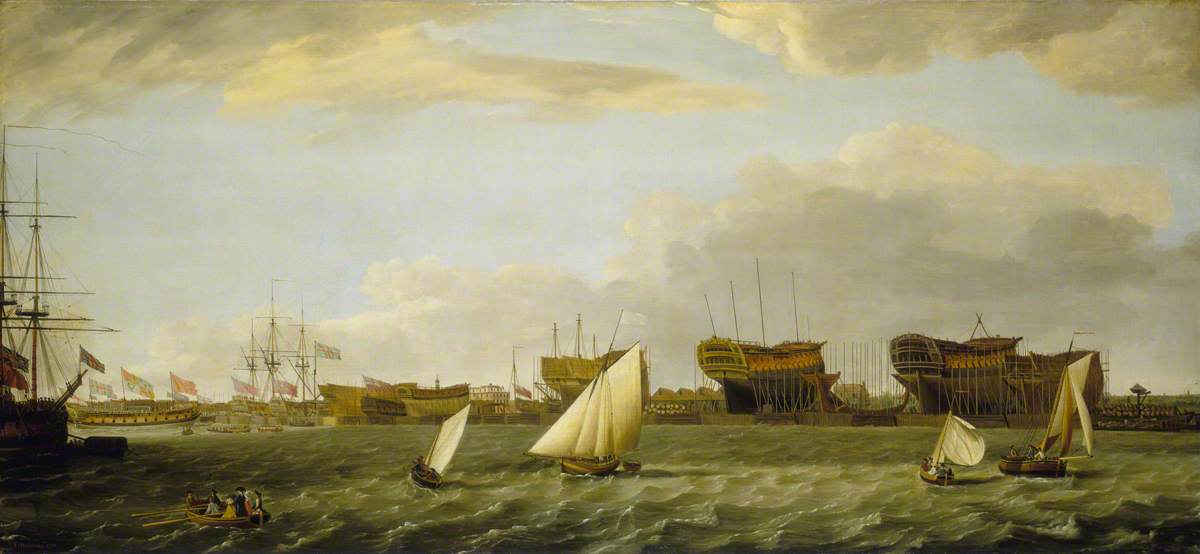Secrecy and Transparency in the English East India Company, 1784-1834
Francis Holman. Blackwell Yard from the Thames. 1784. National Maritime Museum, Greenwich.
'What would be said in England of such a Transaction as this, if its real History was known.'1
About
Secrecy and Transparency in the English East India Company is a Leverhulme Trust-funded postdoctoral project (2018-2021) led by Dr Callie Wilkinson. This project investigates why information about the EIC's expansionary activities in India was or was not communicated to British audiences, and uncovers the contested standards of accountability and state secrecy which informed this process.
Project Description
Previously historians have tried to gauge public opinion by analysing popular representations of empire in Britain, particularly in the press. This project focuses instead on the executive powers, ideological frameworks, and individual acts of dissent which determined what kind of information about empire was released into the public domain in the first place.
The EIC was both a trading corporation and a political and military power with a territorial empire in South Asia. Today, this combination might seem unusual, but historically, private entrepreneurs backed by royal or parliamentary charters were important agents of imperial expansion worldwide. In response to corruption scandals and recurring conflicts with Indian powers, however, the 1784 India Act established a parliamentary Board of Control to oversee the EIC's activities. Confronted with increasing domestic scrutiny, the EIC's administration tried to control the terms of debate by managing how their political and military interventions were presented to British audiences. These attempts did not go unchallenged, however, as journalists, MPs, and EIC employees asserted the public's right to know about the EIC's activities.This project will examine the ideological basis and practical effects of the EIC's information management policies, as well as the opposition they inspired.
The project is divided into three parts, each of which will provide important new insights into political thought and practice at the dawn of Britain's imperial century.
- How did the EIC restrict the circulation of sensitive information through press censorship, disciplinary action, and control over the movement of people?
- What information was considered appropriate or necessary to be made public or kept secret?
- How and why were constraints on the circulation of information defied?
Project Events
- 16-18 June 2021 - 'Knowledge, Communication, and the East India Company'. Panel at Britain and the World Annual Conference, Plymouth, UK.
- 19 February 2021 - 'Speaking Out: Whistle-blowers, Dissidents, and Disclosures'. Interdisciplinary workshop, Global History and Culture Centre, Warwick, UK.
- 03 July 2020 - 'Empire in Motion: Transnational Perspectives on the Indian Empire'. Workshop, Global History and Culture Centre, Warwick, UK.
- 15 June 2019 - 'The Role of the Historian in the Age of Fake News'. Roundtable public event. University of Warwick, Warwick, UK.
Project Publications
Callie Wilkinson, 'Script, Print, and the Public/Private Divide: Sir David Ochterlony's Dying Words', in Caroline Archer and Malcolm Dick, eds., Pen, Print and Communication in the Eighteenth Century (Liverpool: Liverpool University Press, 2020).
References
1. Henry Russell (the East India Company's political Resident at Hyderabad) to his father Henry Russell Sr., 22 May 1820, MS. Eng. lett. c. 151, Russell Papers, Bodleian Library, Oxford, p. 271.

